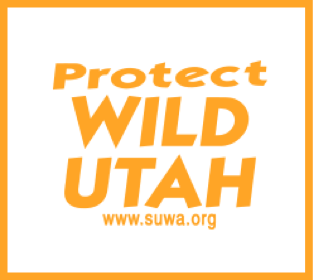|
State Board Rejects Company's Plan to Mine Coal and Sides with Southern Utah Wilderness Alliance Late last week the Utah Board of Oil Gas and Mining (Board) ruled that the Utah Division of Oil, Gas and Mining (UDOGM) erred when it approved a request by UtahAmerican Energy Inc.(UEI) to mine coal at Lila Canyon, and that the coal company failed to provide adequate assurances that its mining operation would not harm the surrounding environment. The Southern Utah Wilderness Alliance asked for a hearing in September after UDOGM authorized UEI to proceed with its plans to mine coal at the canyon. SUWA argued in a hearing earlier this month that UEI's application failed to address key geologic, hydrologic and biological factors and that it improperly processed the permit as a revision to the Horse Canyon Mine rather than a new one. In a 28-page ruling, the Board found that on nine separate points regarding geologic and hydrologic requirements that division's action in approving the permit was "an abuse of discretion without substantial evidence in the record and is not in compliance with the procedures required by law." In addition, the Board, which is strongly represented by industry, similarly ruled that the division could not have assessed the validity of the biological information submitted by UEI because the coal company failed to adequately document the creditability of the information. "Constructing a new coal mine at Lila Canyon was a poorly conceived idea from the start," said SUWA attorney Herb McHarg, "but the fact the Division approved the mine permit without baseline information necessary to ensure that the unique water resources, wildlife habitat, and the people of Utah would be protected was particularly upsetting, and readily apparent to the Board." Lila Canyon is a narrow, steep canyon on the western Book Cliff Range, an oasis of seeps and springs creating critical year around wildlife habitat. The area of the proposed mine has been identified as having wilderness characteristics by the BLM and is currently listed as proposed wilderness in America's Redrock Wilderness Act.If allowed to develop, the mine would have required construction of a 4.7-mile road to the mine site. At the peak of mining operation, coal haul trucks would have taken 550 round trips daily from the mine north to a drop off point in the town of Wellington, Utah. "The Division has a sacred duty to protect the public and the environment against the well-known adverse effects of coal mining. The Board's decision here reflects its conclusion that the Division failed in this case to carry out that duty. We're pleased to be part of the process that led to this conclusion, and to assist the Board in its review of the Division's permit," said David Churchill, a partner at Jenner & Block in Washington who represented SUWA in the case. On six separate occasions beginning in 1998, UEI officials sought approval to mine coal at Lila Canyon, but were rejected by UDOGM each time. Inexplicably, the state authorized the project on the seventh application earlier this year.
|
|
|

 Southern Utah Wilderness Alliance
Southern Utah Wilderness Alliance
Protecting Utah's Redrock Country
